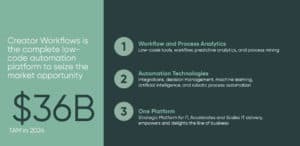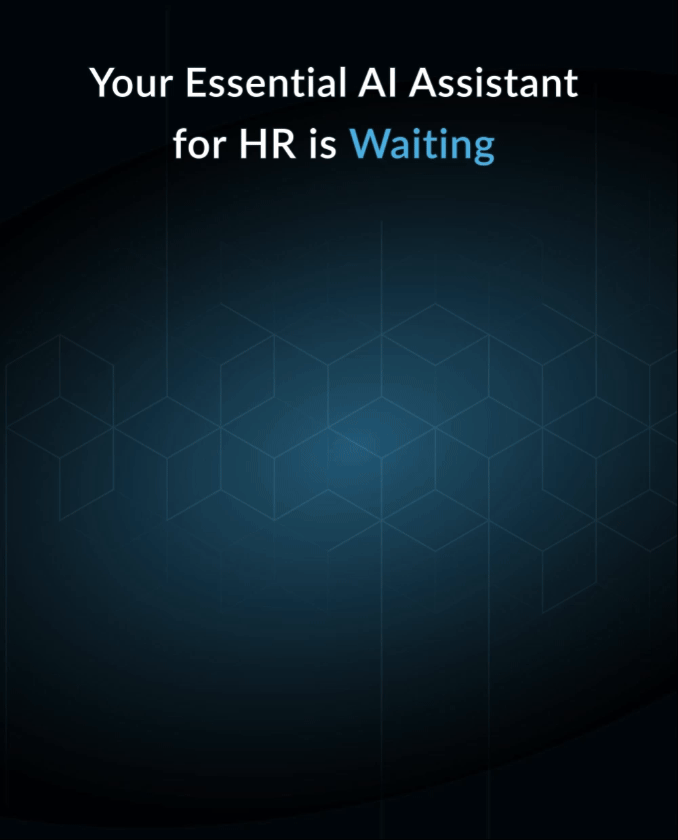Workday Vs. ServiceNow: The Big Shift
Every decade there’s a major shift in enterprise software. In the 1970s companies bought integrated financial systems; in the 1980s and 1990s it was ERP; now it’s a wild west of tools for digital customer experiences, digital employee experiences, and AI-enabled automation.
And thanks to the pandemic, every company is going through a digital transformation. Just this week we talked with three banks, four insurance companies, three retailers, and a number of universities pushing this agenda.
And as you dig into everything going on you realize that companies now want to digitize everything. Of course there’s the digitization of products and services (insurance claims handled by mobile photos, customers adopting digital wallets and advanced credit services, intelligent shopping experiences, online entertainment and service delivery). They want to digitize employee experiences (recruiting, onboarding, career management, and remote work). And they also want to digitize their back office (financials, service delivery, compliance, mobility, and tax).
Well, this week I was reviewing the financial results of Workday, ServiceNow, UiPath, and some other enterprise players and there’s a big story to unfold. While Workday had a great quarter, growing at 18.6% year over year and now generating over $1.1 Billion each quarter, ServiceNow is growing at almost twice that rate, and now boasts as many HR users as Workday. (and UiPath is now valued at almost 60 times revenue.) How can this be?
It’s all about The Big Shift. The shift from ERP and transactional systems toward systems of experience, systems of intelligence, and systems of automation.
Workday has been a pioneering company. This team invented the cloud HR systems market, pioneered an object-oriented database for HR and talent, and they continue to dazzle and delight investors, CHROs, and CIOs. But despite their best efforts to position Workday as a “digital transformation platform,” for most companies, it’s a modern, well-designed, ERP.
I know Workday hates positioning itself as an ERP provider, but this is what the company does. In a highly integrated and elegant way, Workday lets companies put their financials, HR, payroll, and planning applications into one place, and this is what ERP (Enterprise Resource Planning) is all about. It’s a massive and critical market for business, but it’s no longer the center of “digital transformation” around the world.
A digital transformation is more than “digitizing transactions” and putting an integrated business system in place. It’s also a problem of redesigning how work gets done, creating new models for work and workers, and implementing a myriad of intelligent self-service and productivity tools for employees. And this adjacent space, which we now call the “Employee Experience Platform” market, is growing at light speed.
Witness the financial performance of ServiceNow. ServiceNow generated $1.3 Billion of revenue during the same quarter, grew at 31% year over year, and claims to have 50% of the Fortune 50 and 35% of the Fortune 500 on their platform. These are similar numbers to Workday, which has around 55 million users and covers 50% of the Fortune 500. (There are more than a billion employees in the world, so the market is still pretty big yet.)
And it’s funny how every client we talk with now looks at Workday (and Oracle, SAP, and others) for core systems and a second decision for ServiceNow, Salesforce, Eightfold, and others for Employee Experiences, Employee Workflows, and customer and IT service automation.
Just this week a client asked me a pretty profound question. “Now that we have ServiceNow up and running, can we possibly replace our ERP?” Of course, the answer is no, but you can see why they brought it up.
In reality, these two companies, Workday and ServiceNow, are kind of like cousins. They compete in a few small areas, but they’re growing on parallel paths. But as the financial results now show, the market is shifting quickly, and it would not surprise me to see ServiceNow become a “system of record” over time. (ServiceNow just acquired a database company.)
Workday has the huge advantage that employee data belongs in one place, so they would argue you want feedback and employee sentiment information (which is vital to pandemic response) tightly coupled with everything else about people. (The Workday execs highlighted the growth of Peakon, the company’s newly acquired employee feedback tool, in its investor presentation.)
And Workday is absolutely committed to experience management. Workday People Experience is specifically designed to handle workflow management, and Workday’s integrations with Google Cloud and Microsoft Teams are expanding. But it takes time to build that out, and ServiceNow is designed to access multiple back-end systems.
And ServiceNow may argue differently. Why wouldn’t you want employee feedback data coupled with the “employee journeys” and “employee workflows” implemented in ServiceNow? Suppose your badge reader doesn’t work or your onboarding is kind of weak – wouldn’t you want that feedback going into the service delivery system rather than the HRMS? You decide, but you can see where I’m going.
There’s no question that the center of gravity is shifting. Companies need a core HR and financial system to operate, but they want to delight employees and customers too. So ServiceNow, which is more of a “Creator Platform” than Workday (today), is seeing faster growth in the market. (PS: Workday Extend is an application development platform designed to build apps that leverage Workday’s data, security, and process models.)

And let me just add one more point. Corporate Creator Platforms are a $36 Billion market alone (according to ServiceNow) and I would argue it’s even bigger. Every HR team, every manager, and every IT department wants to “build a new workflow” or “design a new process” for something special in their team, department, or functional area. Can they do that in Workday? Not very easily. So they’re going to ServiceNow (or Microsoft Viva and other tools) to do so. (Workday Extend is focused on this area.)
It’s funny how the software industry keeps changing. We used to talk about technology as a way of integrating talent applications (talent management); then we called these platforms “systems of engagement” so they could make employees happy. Well now we’ve shifting again, and the new center of action is toward “systems of intelligence” and “systems of design.”
Read more about all this in our newest research “Employee Experience: The Definitive Guide” and my annual study “HR Technology 2021.” This Fall I’ll be speaking at the HR Technology Conference, so stay tuned for more.
Additional Resources
Workday People Experience Arrives
SerivceNow: The Workflow Workforce
Not To Be Outdone, ServiceNow Ups The Ante in Employee Experience
